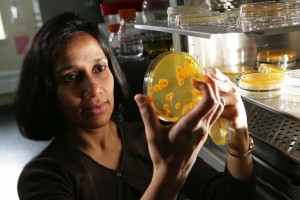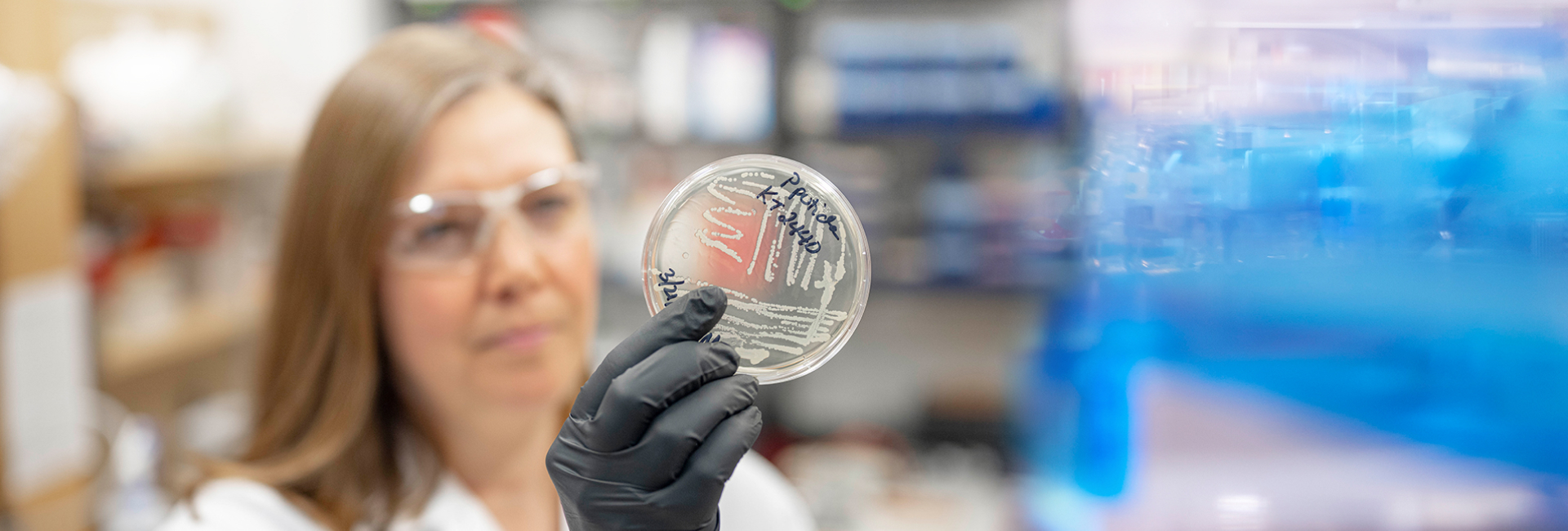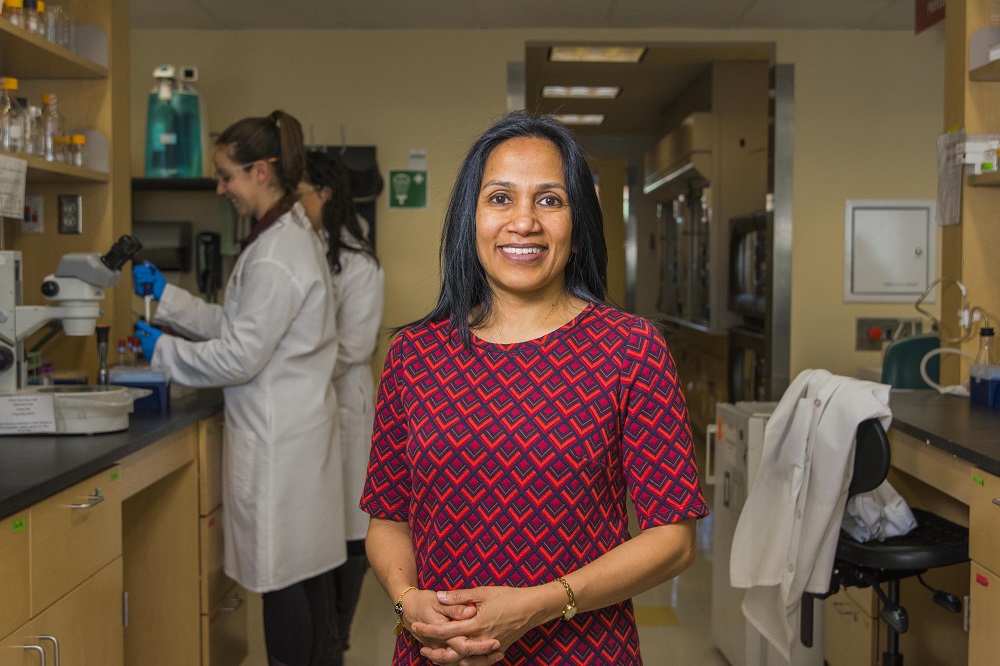Candida albicans (C. albicans) is the pathogen that causes “yeast infections” like thrush and vaginitis. A host of questions surround this nearly ubiquitous organism. For example, how do newborns first become colonized with the fungus, which is known to live on or in virtually every human being. Also, while just about all of us co-exist with C. albicans, why do only some of us ever develop infections? And though the body’s immune system seems programmed to eliminate the pathogen, how are some fungus cells able to avoid destruction.

Reeta Rao in the lab.
“It has been observed that two macrophages (immune cells) from the same host may encounter Candida cells and one macrophage will eat and kill the Candida, while the other may do nothing or even be killed by theCandida it engulfed. We want to understand why,” says Reeta Rao, PhD, associate professor of biology and biotechnology at WPI.
Rao is exploring these questions at the genomic and genetic level as co-principal investigator of a multi-institution National Institutes of Health (NIH) U19 grant recently awarded to the Broad Institute Genomic Center for Infectious Diseases at MIT and Harvard.
When C. albicans does turn on us, the infections usually don’t cause serious harm. But they can become chronic and resistant to available drugs, which do not completely clear the pathogen. Patients with compromised immune systems or implanted medical devices like pacemakers, prosthetic hips, or knees are at greater risk for serious systemic fungal infections, which have a mortality rate between 30 and 50 percent, and the fungus is a common cause of hospital-acquired infections.
If an infection spreads to the bloodstream (for example, via a catheter or central intravenous lines), it can be fatal. The U.S. Centers for Disease Control and Prevention (CDC) has designated drug-resistantC. albicans infections as a serious public health threat.
Rao is exploring these questions at the genomic and genetic level as co-principal investigator of a multi-institution National Institutes of Health (NIH) U19 grant recently awarded to the Broad Institute Genomic Center for Infectious Diseases at MIT and Harvard.
Macrophages, the vacuum cleaners of the human immune system, are the body’s first line of defense against C. albicans. They circulate throughout the body scooping up and digesting cellular waste products and invading pathogens. In the new study, Rao’s team will analyze the gene expression profiles of macrophages that destroy C. albicans and those that don’t. They will also study gene expression in theC. albicans cells that interact with the macrophages. “The idea is to see what genes, or groups of genes, may be active in providing an advantage for either the macrophage or the Candida.”
Collectively, the population of C. albicans and other fungi that live on our bodies is known as the mycobiome. It is likely that the composition of this community plays an important role in determining whether we succumb to fungal diseases or avoid them. As part of her research, Rao is interested in finding out whether we acquire our mycobiomes from our mothers, if we pick up our resident fungi from other sources in the clinical environment, or if both occur.
COLLABORATION WITH UMASS MEDICAL CENTER
Rao will collaborate with physicians at the UMass Memorial Medical Center to analyze the mycobiome of neonates diagnosed with a C. albicabns infection and compare them with the mycobiome of their mothers. “We really don’t know how newborns are colonized by Candida,” Rao says. Samples of C. albicans isolated from newborns will be paired with samples from their mothers for analysis. “We will sequence the genomes of these samples to see if theCandida comes directly from the mother,” she says.
The broader goal of the NIH’s U19 research program is to develop new knowledge about the molecular and genetic processes of many serious infectious diseases. The hope is that basic science discoveries will yield new targets for drug development or new therapeutic strategies that help reduce the incidence and burden of infectious diseases around the world.
In addition to WPI and the Broad Institute, research teams at Brown University, Duke University, Pennsylvania State University, and the University of British Columbia are participating in the project.
Rao’s lab studies various aspects of the mycobiome; in recent years she has focused on the host/pathogen arms race of infectivity and the genetics of fungal drug resistance using C. albicans as a model.
– BY MICHAEL COHEN


